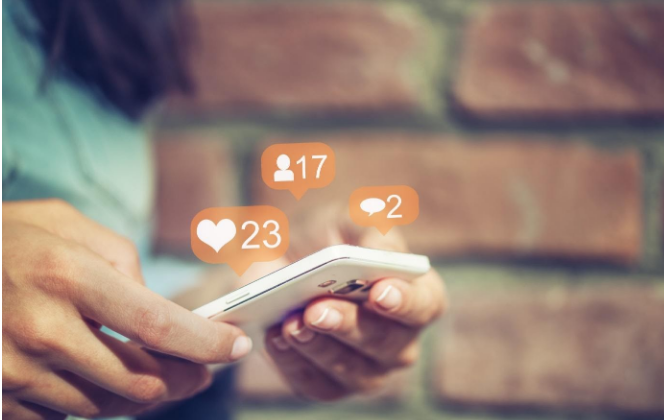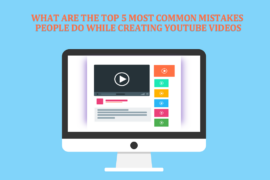In the digital age, social media has emerged as a formidable force, dramatically shaping the lives of adolescents. These platforms serve as virtual playgrounds for social connection, creative expression, and self-discovery. The positive impact of social media on adolescents’ growth and development is undeniable.
However, it is becoming clear that this online presence is a double-edged sword, raising concerns about the consequences for teenage mental health. In this article, we will discuss the connection between adolescent social media use and the prevalence of mental health challenges.
The Digital Landscape of Adolescence
Social media has undeniably transformed the way adolescents interact with the world. It serves as a virtual playground for social connection, creative expression, and self-discovery.
Adolescents use platforms like Instagram, Facebook, TikTok, and Snapchat to build communities, express their individuality, and discover the latest trends. These aspects of social media can contribute positively to their growth and development. However, beneath the enticing veneer of digital interaction lies a complex landscape.
The repercussions of heavy social media use have raised concerns. Studies indicate that adolescents who dedicate excessive time to these platforms may experience adverse mental health effects. These repercussions can manifest as heightened anxiety, body image issues, disordered eating, self-harm tendencies, and even clinical depression.
Cyberbullying: A Hidden Menace
Cyberbullying is a pervasive issue that often remains hidden behind the screens of social media platforms. Pew Research’s 2022 survey reports that a significant 46% of adolescents have experienced at least one form of cyberbullying.
The definition of harassment in this context encompasses offensive name-calling, the dissemination of false rumors, and the distribution of one’s explicit photos. Threats of physical harm and the sharing of explicit images without consent are also included.
The Trolling Epidemic
Trolling, a prevalent practice on social media, refers to the act of making provocative comments or posts to elicit strong emotional responses. Trolling often takes place in the form of arguments or hostility. Trolls take advantage of online anonymity and may attack someone based on their culture, race, religion, sexual orientation, gender, or handicap.
This type of conduct can lead to online drama and feelings of overload. Trolling is an issue that both teens and adults are concerned about. Trolls are often motivated by the desire to incite reactions from others, and their actions can lead to feelings of distress and anxiety.
The Harsh Reality of Cyberstalking
Cyberstalking, a troubling phenomenon in the digital era, refers to the use of email, the internet, or other technology to stalk and harass individuals. The characteristics of cyberstalking parallel those of physical stalking, involving unwelcome and disturbing online messages. Cyberstalkers are deliberate and persistent in their actions, and their online communications often contain inappropriate and distressing content.
For those targeted by cyberstalkers, the experience can be deeply unsettling and detrimental to their mental well-being. The effects of cyberstalking are not confined to a specific age group or demographic. Adolescents can easily fall victim to this form of online harassment, which underscores the need for stringent measures to combat and prevent cyberstalking.
The Dangers of Online Sexual Harassment
Online sexual harassment represents a concerning aspect of social media use, with detrimental effects on adolescent mental health. This form of harassment encompasses a wide range of behaviors. This includes unwanted requests for explicit photos or videos, unsolicited sexual communication, and requests to livestream sexual acts.
The consequences of online sexual harassment can be severe, leading to emotional distress, anxiety, and depression among adolescents. A particularly troubling aspect is the sharing of private sexual images or videos without consent, commonly known as revenge porn. This behavior can cause profound harm, including severe emotional and psychological trauma.
Adolescents who have been subjected to online sexual harassment may feel more vulnerable and anxious. To solve this problem, people and social media platforms must take proactive steps to report and prohibit such harmful actions.
Social Media and Mental Health
According to Teen Vogue, researchers have noted that social media use can stimulate the release of dopamine in the brain. This is similar to what happens when we eat or engage in pleasurable activities. This rewarding experience can lead to the desire to check social media more frequently, potentially resulting in addictive behavior.
The key to mitigating potential harm from social media lies in how it is used. Routine social media use, integrated into one’s daily life and involving interactions with shared content, is positively associated with overall health outcomes. Negative effects, such as excessive use due to fear of missing out or feelings of disconnection, are often linked to harmful use patterns.
Lawsuits on Social Media and Mental Health
According to TorHoerman Law, a wave of lawsuits has emerged amid the growing concerns about the impact of social media on mental health. Plaintiffs have alleged that social media platforms can have detrimental effects on children and adolescents. These lawsuits claim that the platforms knowingly downplayed the harm caused by their addictive design and failed to warn users about the associated dangers.
Instagram is one of the worst-hit platforms in this wave of lawsuits. The platform has been repeatedly accused of promoting unrealistic beauty standards and perpetuating the negative impacts of social comparison among its younger users.
A quick Google search for “Instagram lawsuit 2023” reveals a series of high-profile cases that have garnered significant attention in 2023. These lawsuits have been brought forth by individuals, parents, and advocacy groups concerned about the welfare of young users. They have raised various critical issues that underscore the complex relationship between social media platforms, mental health, and responsibility.
According to an August 2023 update by ConsumerNotice.org, there have been no court-approved settlements or jury verdicts in these lawsuits. However, 408 social media cases are pending in the Northern District of California in multidistrict litigation. Various school districts have also filed lawsuits, highlighting the impact of social media on students’ mental health.
The Dark Side of Social Media: A Call to Action
The evidence connecting social media use and adolescent mental health issues continues to mount. As a result, it is crucial that we take proactive steps to minimize its negative consequences for kids and teens. Awareness and responsible use are key to safeguarding the mental well-being of adolescents and adults alike.
Here are some practical strategies to minimize the harm associated with social media use:
- Set Limits: Setting time limits for social media use, especially for adolescents, can be beneficial. A study found that limiting daily social media use to 30 minutes decreased loneliness and depression over three weeks compared to unrestricted use.
- Practice Mindfulness: Pause before opening social media apps; consider if your impulse to check your phone is a habit or a genuine desire. Practicing active mindfulness can help individuals use social media for positive purposes, such as engaging in the body positivity movement or finding volunteer opportunities.
- Protect Your Information: Protecting personal information on social media is critical for avoiding fraud, cyberstalking, and other dangerous activities. Avoid oversharing personal information and accept friend requests only from individuals you know. To improve online security, utilize two-factor authentication and strong, unique passwords.
- Report Online Harassment: Always report online harassment and harmful behaviors. Each social media platform has a reporting mechanism for flagging trolls and online abusers. Avoid engaging with trolls, as they often seek reactions; ignoring them can discourage their behavior.
Final Word
The digital age has ushered in a transformative era of social media, profoundly shaping the lives of adolescents. While these platforms offer valuable opportunities for growth and connection, they also expose young users to a host of mental health challenges.
The surge in lawsuits against social media giants underscores the urgency of addressing these concerns. To protect the well-being of our youth, we must champion responsible use and proactive strategies that limit exposure to harm.
As we navigate this dynamic landscape, it is vital to recognize that social media’s impact on adolescent mental health is a multifaceted issue. Ultimately, it is an active challenge that demands ongoing awareness, education, and concerted efforts to mitigate its negative consequences.




